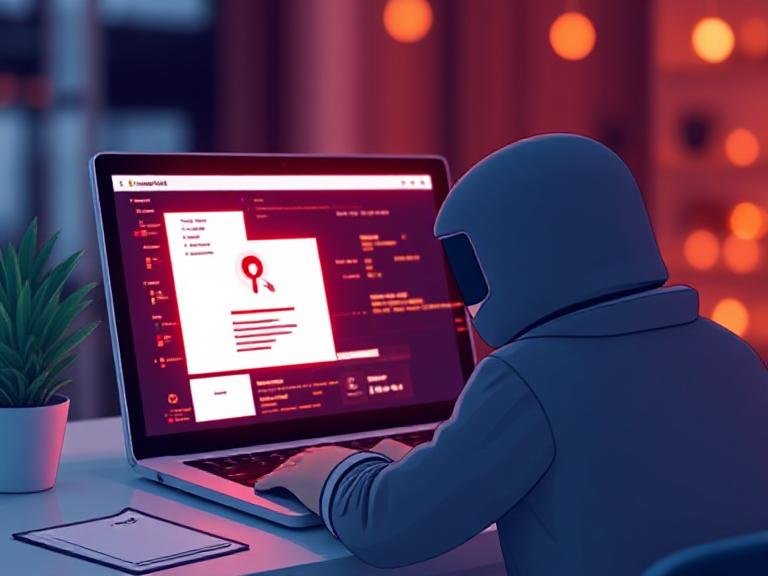6 Security Weaknesses That Put Any Organization at Risk

6 Security Weaknesses That Put Any Organization at Risk
It started like any other IT hiccup.
Slow emails. A few error messages. Maybe a server reboot would fix it.
But within hours, the University of Sunderland was paralyzed:
→ Online classes? Cancelled.
→ Staff emails? Locked out.
→ Phones and website? Down.
→ Operations? Frozen.
This wasn’t a glitch. It was a full-blown cyberattack — and it exposed something terrifying: even institutions with IT teams, budgets, and “security protocols” can be brought to their knees by basic, preventable flaws.
And if it can happen to them?
It can happen to you.
The difference?
→ For a university, it meant missed lectures and frustrated students.
→ For your business? It could mean lost revenue, legal liability, customer trust down the drain — and recovery costs in the tens of thousands.
The good news?
Most attacks don’t come through magic hacking skills.
They come through predictable, fixable holes — the same ones we’re about to show you.
Here are the 6 silent killers that let hackers walk right in — and how to lock them down before it’s too late.
🚨 6 Cybersecurity Vulnerabilities You Can’t Afford to Ignore (Lessons from a Hacked University)
1. “We Have Antivirus!” — But It’s Useless Against Modern Attacks
Let’s be blunt: if you’re still running “traditional” antivirus — the kind that only looks for known virus signatures — you’re not protected. You’re bait.
Hackers don’t use old malware. They use:
→ Fileless attacks (no download needed).
→ Zero-day exploits (no signature exists yet).
→ Living-off-the-land tricks (using your own tools against you).
✅ Fix it:
→ Upgrade to Next-Gen Endpoint Protection — tools that watch for behavior, not just files.
→ Look for EDR (Endpoint Detection & Response) — so you can see what the attacker did, not just that they got in.
→ If you can’t replace it yet? At least enable behavioral monitoring and real-time alerts.
This isn’t an upgrade. It’s a survival tool.
2. Everyone’s an Admin — And That’s a Nightmare
Here’s a scary stat: 80% of breaches involve privileged credentials.
Why? Because if a hacker gets into one account with admin rights — they own your entire network.
Too many companies:
→ Give “just in case” admin access to junior staff.
→ Let users install software without approval.
→ Don’t review permissions when people change roles (or leave!).
✅ Fix it:
→ Follow the Principle of Least Privilege: only give access needed for the job — nothing more.
→ Remove local admin rights from standard users.
→ Review permissions quarterly — especially after role changes or departures.
Your IT guy doesn’t need access to payroll. Your accountant doesn’t need to install server software.
Keep it tight. Keep it safe.
3. Your Passwords Are a Joke — And Hackers Know It
Phishing emails. Fake login pages. Credential stuffing.
Hackers don’t need to “crack” your password — they trick someone into handing it over.
And once they have it? They’re inside — no alarms, no warnings.
Worse? It’s not just humans:
→ Servers talk to servers.
→ Apps log into databases.
→ Devices authenticate automatically.
If those credentials are weak or default? Hackers move laterally — silently — across your entire system.
✅ Fix it:
→ Enforce strong, unique passwords (12+ chars, mix of types).
→ Mandate Multi-Factor Authentication (MFA) — everywhere. No exceptions.
→ Use a password manager — so people don’t reuse “Password123” everywhere.
→ Rotate service account passwords regularly.
Your first line of defense shouldn’t be something you wrote on a sticky note.
4. Your Network Is One Big Open Room — No Walls, No Doors
Imagine your office:
→ Finance, HR, R&D, customer data — all in one giant room.
→ No locked doors. No security cameras.
→ One intruder gets in — they see everything.
That’s what happens without network segmentation.
Hackers love flat networks. They get in through a low-risk device (printer, thermostat, intern’s laptop) — then roam freely until they find the good stuff.
✅ Fix it:
→ Break your network into zones (e.g., guest Wi-Fi, employee devices, servers, payment systems).
→ Use firewalls and microsegmentation to control traffic between zones.
→ Monitor for weird internal traffic — like a laptop talking to a database server at 3 AM.
Think of it like building walls after the thief is inside. Too late.
5. “It Worked Out of the Box!” — So You Left the Back Door Wide Open
Default passwords.
Unpatched firmware.
Setup pages left running.
Unused ports open to the internet.
This isn’t negligence — it’s inviting trouble.
Hackers scan for these misconfigurations 24/7. They don’t need genius skills — they just need you to be lazy.
✅ Fix it:
→ Change ALL default credentials — routers, cameras, servers, apps.
→ Disable unused services and ports.
→ Use automated configuration scanners (like CIS-CAT or Nessus) to find misconfigurations.
→ Compare settings against industry benchmarks (NIST, CIS).
Security isn’t about complexity. It’s about doing the basics — consistently.
6. You’re One Click Away From Ransomware — And You’re Not Ready
Ransomware isn’t “if.” It’s “when.”
And paying the ransom?
→ No guarantee you’ll get your data back.
→ You’re funding criminal organizations.
→ You’re telling hackers you’re an easy target for round two.
✅ Fix it:
→ Backup religiously — offline, offsite, immutable. Test restores monthly.
→ Patch everything — OS, apps, plugins, firmware.
→ Block risky email attachments and links.
→ Train your team — run phishing simulations. Reward those who report scams.
Your backup isn’t “just in case.” It’s your business’s lifeline.
🔐 Bottom Line: Hackers Don’t Break In — They Walk Through Open Doors
The University of Sunderland didn’t fail because of some Hollywood-level hacker genius.
They failed because of basic, well-known vulnerabilities — the same ones sitting in thousands of businesses right now.
You don’t need a million-dollar security team.
You need to close the obvious holes — the ones hackers are counting on you to ignore.
Do it now.
Before you’re the next headline.
👋 Not Sure Where to Start? Let’s Find Your Weakest Link.
If reading this made you sweat a little — good. That means you’re paying attention.
We offer a free, no-pressure 15-minute chat to:
→ Spot your biggest 1–2 vulnerabilities (usually takes <10 minutes to find)
→ Recommend your next 3 steps — no tech jargon, no overwhelm
→ Help you avoid becoming a cautionary tale
Because in cybersecurity, the only dumb mistake is the one you didn’t fix — until it was too late.




